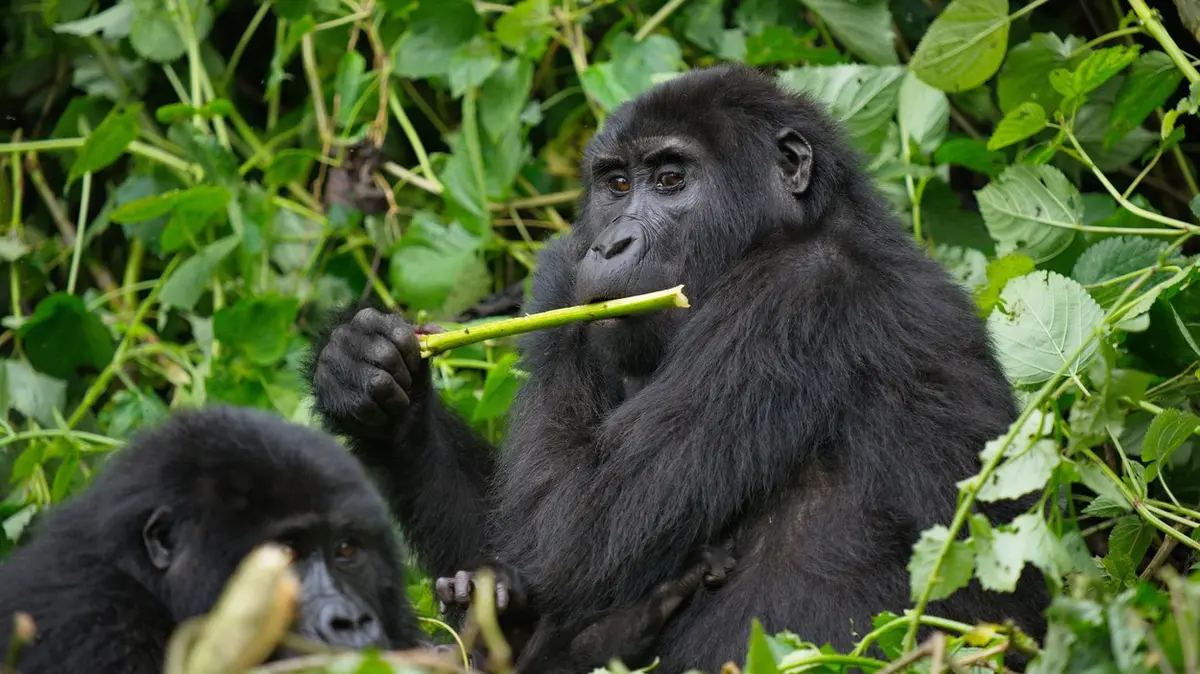“For the most part, we’ve been told that the interactions between these two species consist of either competing with each other or avoiding each other,” said anthropologist Crickette Sanz of the University of Washington in St. Louis. Louis, who first witnessed a similar sight in 2000. Over more than two decades of observations in the Nouabalé-Ndoki National Park in the Republic of the Congo, Sanz and his colleagues have documented the formation of long-term friendships and other forms of social interaction between individual chimpanzees and gorillas. They published their findings in the specialist journal iScience in September.
While scientists have studied chimpanzee populations in East and West Africa in detail in recent decades, groups from the Republic of the Congo are known as currency, according to Sanzová. The area they inhabited overlaps with that of most of the remaining gorillas, especially in a remote area called the Goualougo Triangle.
In 1999, Sanzová and his colleagues began a long-term study of a group of chimpanzees from Goualouga. During daily expeditions in which scientists followed them through the jungle, they recorded 285 interactions between the two species. Chimpanzee-gorilla encounters last from one minute to more than eight hours.
Interaction often occurs when the chimpanzee troop encounters an interesting food item, such as a fig or cinquefoil. The chimpanzee’s boisterous enthusiasm piqued the interest of a gorilla family. In 34 percent of cases, both groups of monkeys ate in the same tree or foraged together.
general tolerance
The interactions the scientists observed could be described as “general tolerance,” said Sanz, and primates rarely actively friendly. Larger gorillas tended to approach mother chimpanzees more frequently than males or females without offspring.
The different individuals then chase each other in pairs, wrestle and generally play wildly. According to the researchers’ findings, relationships usually last for years. When encountering a group of other species, the animals look around the group and then chase after an individual they know.
Chimpanzees treat injuries with crushed insects, help others, study finds
Science and school
The monkeys sometimes fight, and experts have noted friction between them. But aggressive interactions rarely went beyond warning calls and never escalated into the deadly attacks that researchers in Gabon recorded.
“They weren’t together all the time, but they were definitely together more consistently and regularly than we thought,” said Sanz. “You don’t expect social bonds like that when it’s just ‘random encounters for food,'” added the anthropologist.
Playing together is fun
Sanzová and his colleagues found that two-species groups did not appear to protect their members from predators. Conversely, maintaining friendly relations leads to new food choices, such as when members of one group sometimes tell others about fruits that are harder to find.
Photo: Profimedia.cz
A pair of chimpanzees (illustration photo)
“It must be fun for them to play together like between us and, for example, a dog or other companion animal. This broadens our view of primate social systems, which are usually formed within only one species,” said Frans de Waal, primatologist at Emory University. in Atlanta, USA, who were not involved in the study.
The existence of a peaceful interaction between two great ape species has interesting implications for our own evolutionary history. Anthropologists often assume that different types of hominids actively competed with each other, reports Sanzová. But as chimpanzees and gorillas suggest, our human ancestors may have formed alliances to share resources.
Scientists have recorded the first fatal chimpanzee attack on a gorilla
Cocktails

“Unapologetic social media guru. General reader. Incurable pop culture specialist.”







